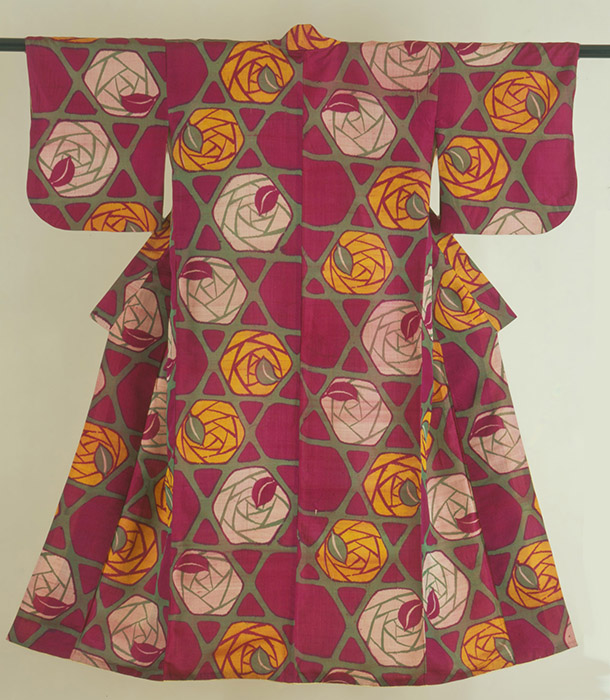Well into the last century, Japan’s traditional national dress—the kimono—was worn by men, women and children of all social classes. Deceptively simple in concept—a one-piece, front-wrap garment with a straight silhouette—the kimono lent itself to endless variations in color, pattern and design that signaled age, gender, status, occasion, even the change of seasons.
Nearly 100 extraordinary examples of kimono created between the 1890s and the 1950s told the story of how Japan’s traditional national dress was influenced by technological advances in silk production and exposure to Western cultures. Included are everyday garments; intricately embroidered ceremonial robes; boys’ kimono stenciled with cars, airplanes and battleships; and colorful examples with Art Deco patterns that heralded the emergence of Japan’s “new woman.” All were drawn from the famed Montgomery Collection in Lugano, Switzerland.
This exhibition was organized and circulated by Art Services International, Alexandria, VA. Support for the national tour and catalog was provided by The E. Rhodes and Leona B. Carpenter Foundation.
In Rochester, the exhibition was made possible by the Gallery Council of the Memorial Art Gallery and the Robert L. and Mary L. Sproull Fund.

